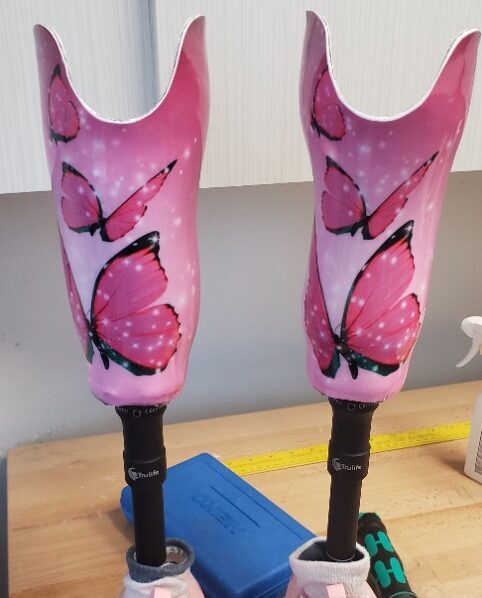In the ever-evolving world of medical devices, 3D printing has emerged as a game-changer for prosthetics and orthotics. At Nevada Limb & Brace, we’re at the forefront of leveraging this innovative technology to create patient-specific designs that enhance comfort, functionality, and accessibility. Whether it’s limb replacement solutions or custom implants, 3D printing allows us to deliver personalized assistive devices that truly transform lives. In this blog post, we’ll explore how 3D printing is reshaping the field of biomedical engineering, from rapid prototyping to the use of biocompatible materials, and why it’s becoming essential for rehabilitation and wearable technology.
Understanding 3D Printing in Prosthetics
3D printing, also known as digital fabrication, involves building objects layer by layer from a digital model. In the context of prosthetics, this technology enables the creation of functional prosthetics that are tailored to individual needs. Unlike traditional manufacturing methods, which can be time-consuming and rigid, 3D printing offers rapid prototyping capabilities. This means we can quickly iterate on designs, test them, and refine them to ensure optimal performance.
At Nevada Limb & Brace, our focus on 3D printing for prosthetics stems from its ability to produce lightweight structures that mimic natural movement. These structures are not only durable but also integrate seamlessly with the body, reducing the strain often associated with conventional limb replacements. By incorporating advanced polymer materials, we ensure that our prosthetic sockets and components are both strong and flexible, providing a foundation for bionic limbs that feel like an extension of the user.
The Custom Design Process: From 3D Scanning to Final Fit
One of the most exciting aspects of 3D printing in prosthetics is the emphasis on customization. It all starts with 3D scanning, a non-invasive technique that captures precise measurements of a patient’s anatomy. This data is then fed into CAD modeling software, where our team of experts in biomedical engineering crafts a patient-specific design.
This approach eliminates the one-size-fits-all mentality, allowing for prosthetic sockets that conform perfectly to the residual limb. The result? Enhanced comfort and reduced risk of skin irritation or pressure sores. For patients seeking orthotics or assistive devices, this level of personalization means better mobility and faster rehabilitation. At Nevada Limb & Brace, we prioritize this process to deliver medical devices that support daily activities, from walking to more complex tasks, making low-cost prosthetics a reality without compromising quality.
Innovative Materials Driving Prosthetic Advancements
The materials used in 3D printing play a crucial role in the success of prosthetics. Biocompatible materials, such as specialized polymers, ensure that the devices are safe for long-term contact with the skin and tissues. These polymer materials are engineered to be hypoallergenic and resistant to wear, making them ideal for wearable technology in rehabilitation settings.
Furthermore, 3D printing allows for the integration of lightweight structures that don’t sacrifice strength. Imagine a bionic limb that’s as light as a feather yet capable of withstanding daily rigors—this is the power of modern digital fabrication. Our commitment at Nevada Limb & Brace to using these advanced materials means patients receive functional prosthetics that promote natural gait and energy efficiency, ultimately aiding in faster recovery and improved quality of life.
Benefits for Patients: Accessibility and Enhanced Functionality
The true value of 3D printing in prosthetics lies in its impact on patients’ lives. Accessibility is a key benefit, as rapid prototyping reduces production time from weeks to days, making high-quality limb replacements available sooner. This speed is particularly vital in rehabilitation, where timely access to assistive devices can accelerate healing and independence.
Low-cost prosthetics are another advantage, as 3D printing minimizes material waste and labor costs compared to traditional methods. Patients benefit from custom implants and orthotics that are affordable yet highly effective, thanks to the precision of CAD modeling and 3D scanning. For those with unique anatomical needs, patient-specific designs ensure that the prosthetics align perfectly, reducing discomfort and enhancing functionality.
In the realm of wearable technology, 3D-printed prosthetics can incorporate sensors or adaptive features, turning them into smart assistive devices. This fusion of technology supports ongoing rehabilitation by providing real-time feedback on usage and fit, empowering users to take an active role in their recovery.
Looking Ahead: The Future of 3D Printing in Biomedical Engineering
As we look to the future, the intersection of 3D printing with tissue engineering holds immense promise. Biomedical engineering advancements are paving the way for prosthetics that not only replace limbs but also integrate with biological tissues for even greater functionality. Imagine prosthetic sockets enhanced with regenerative elements, promoting healing at the cellular level.
At Nevada Limb & Brace, we’re excited about these developments and continue to invest in research to bring cutting-edge solutions to our patients. Whether it’s refining biocompatible materials or exploring new applications in digital fabrication, our goal is to make prosthetics more intuitive and life-enhancing. This forward-thinking approach ensures that accessibility and customization remain at the heart of what we do, making advanced medical devices available to all who need them.
Conclusion: Partner with Nevada Limb & Brace for Your Prosthetic Needs
3D printing is revolutionizing prosthetics by offering unparalleled customization, rapid prototyping, and the use of innovative biocompatible materials. From 3D scanning and CAD modeling to creating lightweight structures and functional prosthetics, this technology is making limb replacement and orthotics more accessible than ever. At Nevada Limb & Brace, we’re dedicated to harnessing these advancements in biomedical engineering to provide low-cost prosthetics, wearable technology, and assistive devices that support rehabilitation and empower individuals.
If you’re exploring options for prosthetics or custom implants, contact us today to learn how our patient-specific designs can make a difference in your life. Together, we can embrace the future of digital fabrication and bionic limbs for a more inclusive world.



